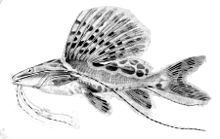
Pseudoplatystoma is a genus of several South American catfish species of family Pimelodidae. The species are known by a number of different common names. They typically inhabit major rivers where they prefer the main channels and tend to stay at maximum depth, but some species can also be seen in lakes, flooded forests, and other freshwater habitats. They have robust bodies, and are important food fish. Recently, their population size has been on the drastic decline due to a variety of factors including overfishing and habitat destruction due to the construction of hydroelectric dams.

Chaca is the only genus in the catfish family Chacidae. These fish are commonly known as squarehead catfishes, frogmouth catfishes, or angler catfishes. These unusual fish have a sedentary lifestyle and spend much of their time motionless.
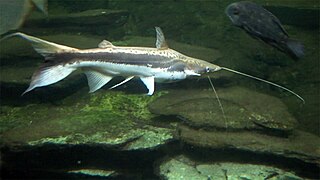
Sorubim is a small genus of long-whiskered catfish native to tropical South America. A number of characteristics allows the differentiation of each species in the genus. Sorubim species are important food fish in South America and are highly significant to fisheries of some areas; however, harvests of these fish are not identified as much as other, more popular food fishes such as Colossoma, Arapaima, and Brachyplatystoma. Some species of this family are popular aquarium fish.
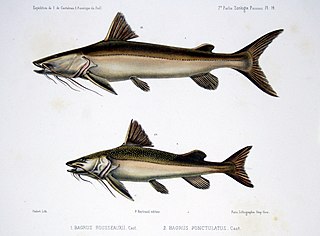
Brachyplatystoma is a genus of catfish from the family Pimelodidae. As the occasionally used common name goliath catfishes indicates, this genus includes some of the largest species of catfish, including the piraíba, B. filamentosum, which reaches up to the region of 3.6 metres (12 ft) in length. Brachyplatystoma are found in the Amazon and Orinoco basins, and other tropical freshwater and brackish habitats in South America. Some species are migratory. These fish are important as food fish and, to some extent, aquarium fish.

Hemibagrus wyckioides, the Asian redtail catfish, is a species of catfish of the family Bagridae.
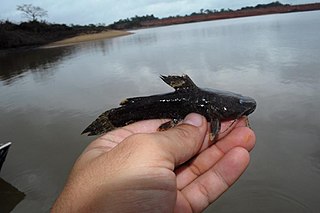
Batrochoglanis is a small genus of catfishes of the family Pseudopimelodidae.

Bagrichthys is a genus of bagrid catfishes.

Sisor is a genus of catfishes native to Asia.

Paraplotosus is a genus of catfishes native to Australasia and South-east Asia.
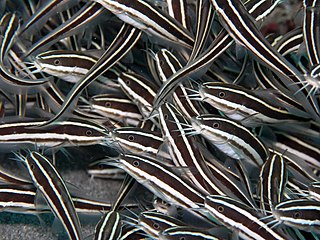
Plotosus is a genus of eeltail catfishes native to the Indian Ocean, the western Pacific Ocean and New Guinea.
The Somalia catfish is a species of catfish in the family Bagridae. The Somalia catfish is native to the Jubba River in Somalia.
Synodontis afrofischeri, known as Fischer's Victoria squeaker, the marbled Victoria squeaker, Fischer's catfish, or the Victoria synodontis, is a species of upside-down catfish native to Kenya, Rwanda, Tanzania and Uganda. It was first described by German zoologist Franz Martin Hilgendorf in 1888, based upon a holotype discovered in Lake Victoria. The specific name "afrofischeri" is in honor of the German researcher Dr. Gustav Fischer, a German explorer of Africa.
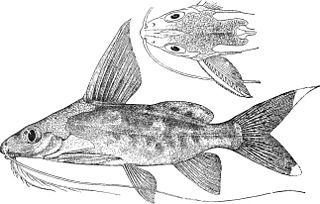
Synodontis alberti, the bigeye squeaker, Albert's syno, bigspotted squeaker, or high-fin synodontis, is a species of upside-down catfish native to the Congo Basin of Cameroon, the Democratic Republic of the Congo and the Republic of the Congo. It was originally described in 1891 by Belgian ichthyologist Louise Schilthuis after its discovery in the Malebo Pool of the Congo River.
Synodontis marmoratus is a species of upside-down catfish that is native to Cameroon where it is found in the Sanage and Nyong Rivers. It was first described by Swedish zoologist and conservationist Einar Lönnberg in 1895, from a specimen collected from Bonge, Cameroon.

Pimelodus pictus, also known as the pictus cat or pictus catfish, is a small member of the catfish family Pimelodidae, native to the Amazon and Orinoco river basins and commonly kept as a pet in freshwater aquariums. Pictus catfish are sometimes mislabeled as Angelicus cats in the aquarium trade, but the latter name actually refers to an unrelated African catfish, the mochokid Synodontis angelica.
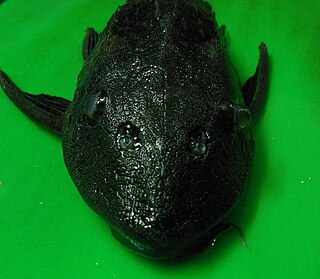
Pterygoplichthys multiradiatus is one of several tropical fish commonly known as Orinoco sailfin catfish, plecostomus. It belongs to the armored catfish family (Loricariidae). Named for its sail-like dorsal fin, the part of its scientific name multiradiatus means "many-rayed" and refers to the rays of the dorsal fin. P. multiradiatus is one of a number of species commonly referred to as the common pleco by aquarists.
The Highwaterman catfish, is a species of pelagic potamodromous catfish of the family Pimelodidae that is native to Guyana, Suriname, Venezuela, northern Brazil and Gulf of Paria.
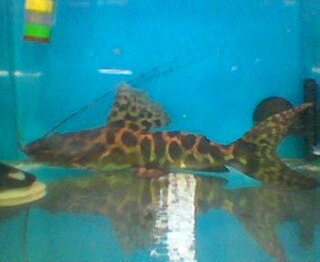
Leiarius longibarbis, commonly as Marbled Pim, is a species of demersal catfish of the family Pimelodidae that is native to Guyana and Brazil.
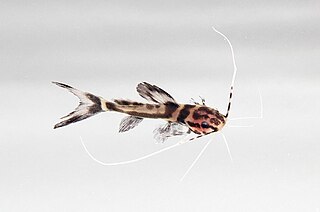
Leiarius marmoratus, commonly as Sailfin Pim or Achara Catfish, is a species of demersal catfish of the family Pimelodidae that is native to Amazon and Orinoco river basins.

Leiarius pictus, commonly as Sailfin Pim, Painted Catfish or Saddle Catfish, is a species of demersal catfish of the family Pimelodidae that is native to Amazon, Essequibo, and Orinoco River basins of Colombia Venezuela, Peru and Brazil.
